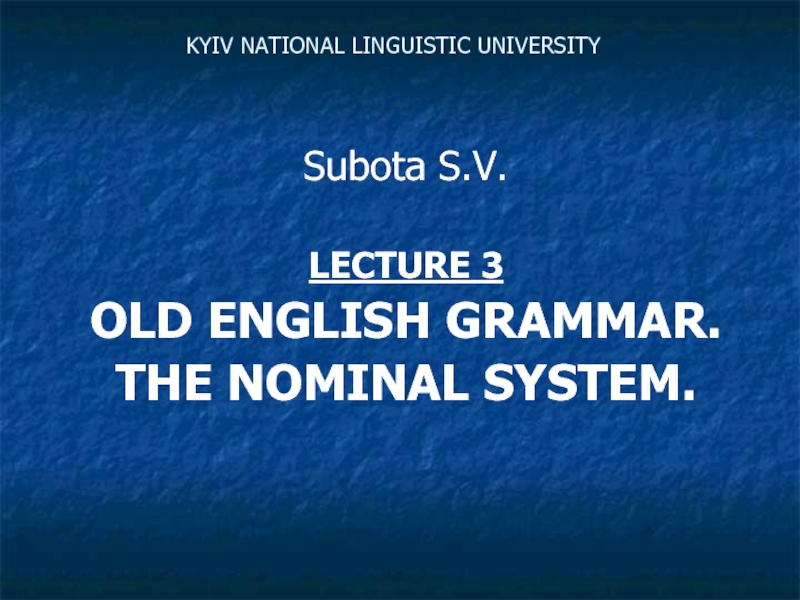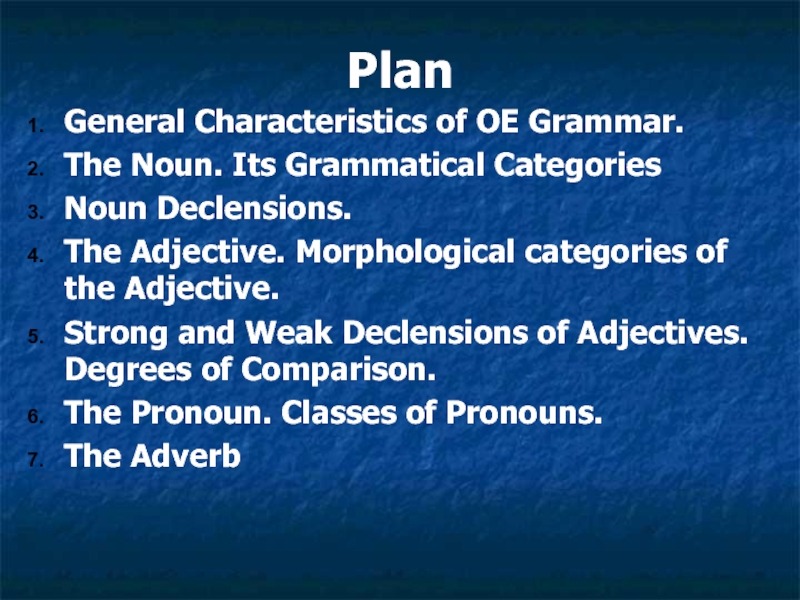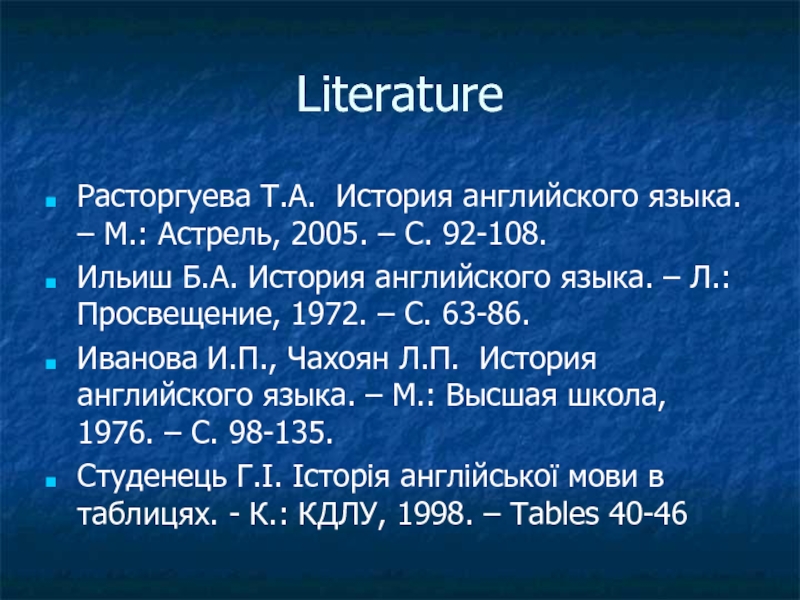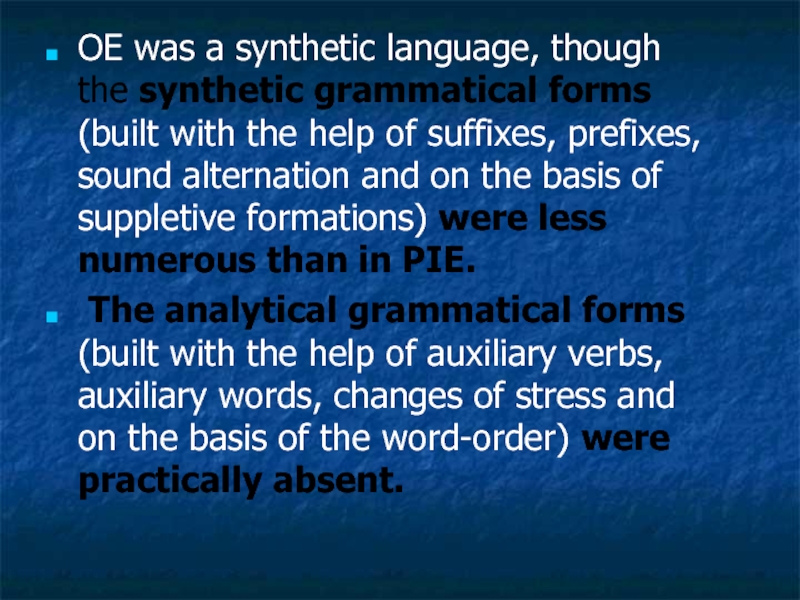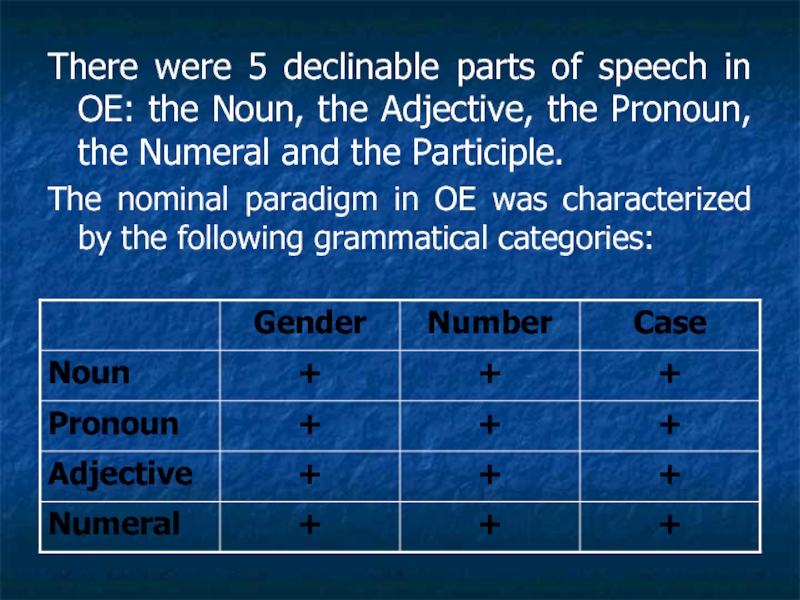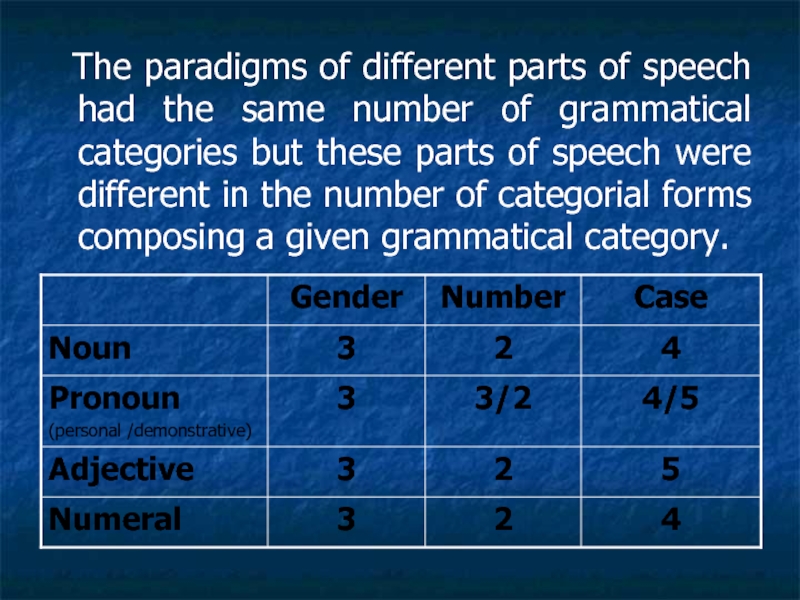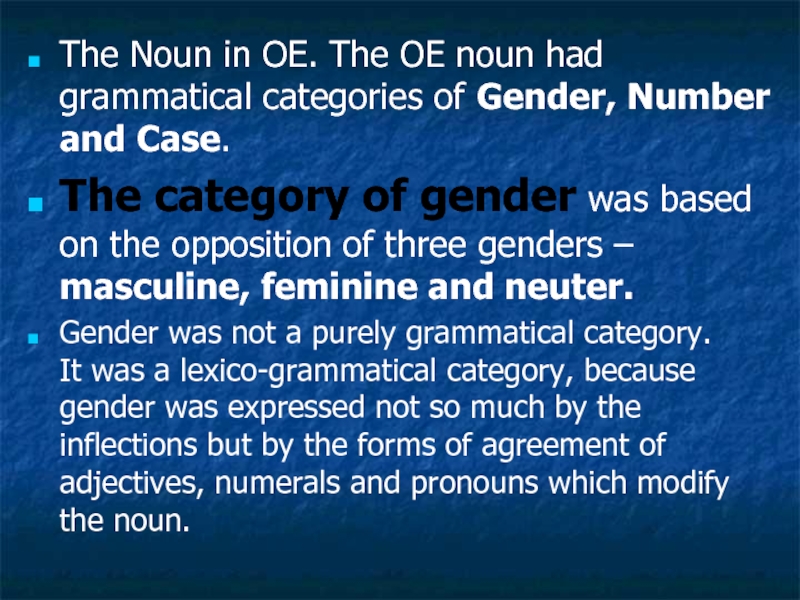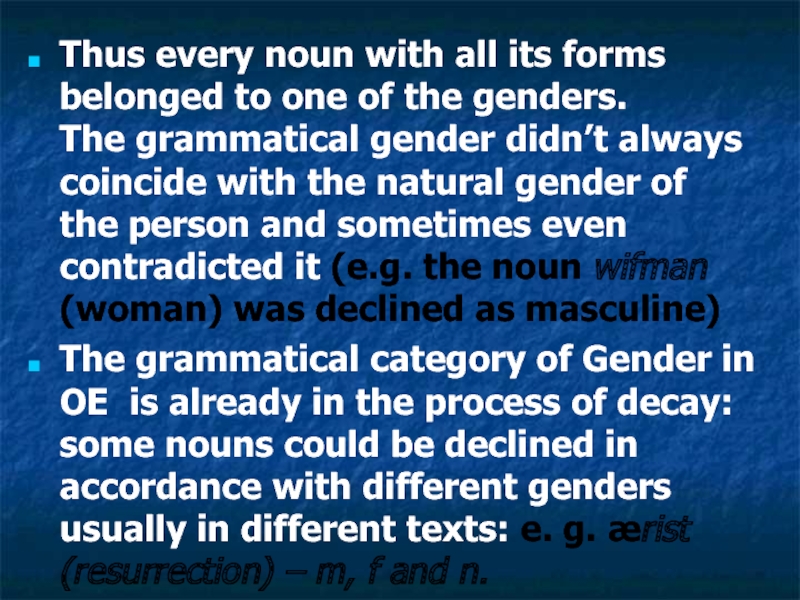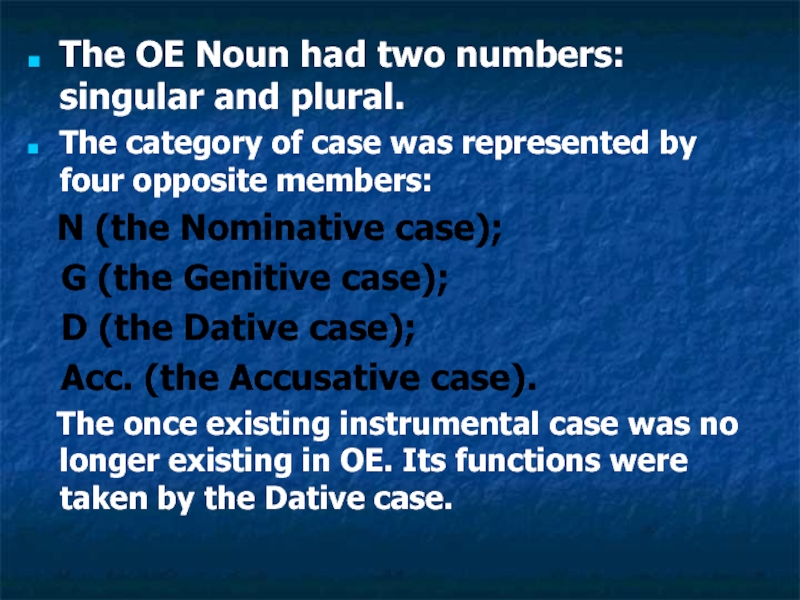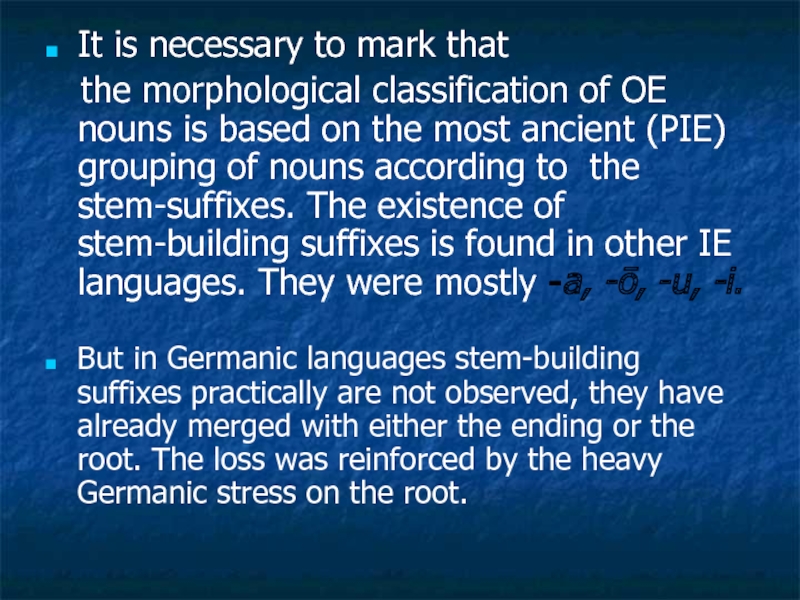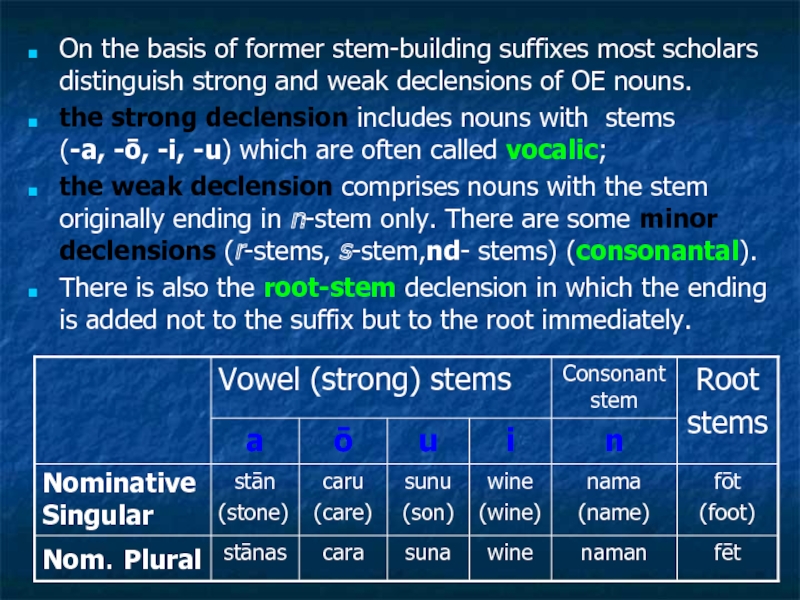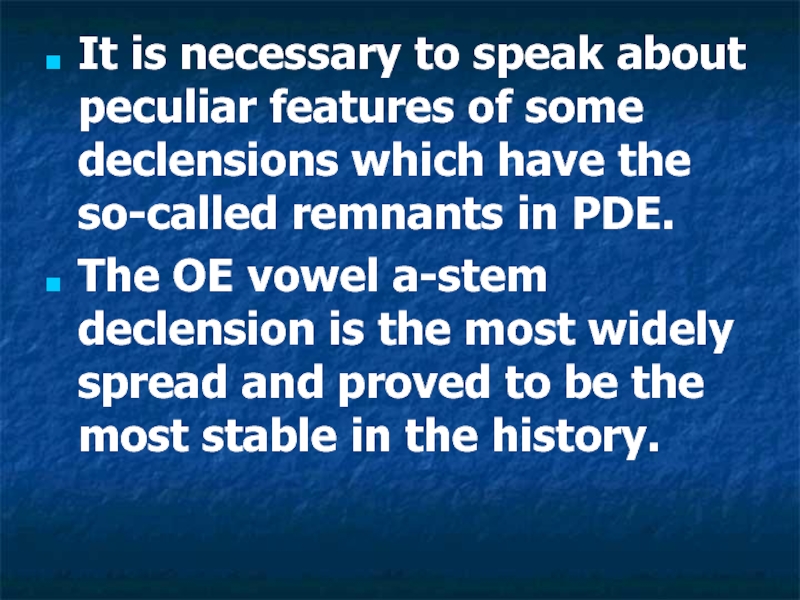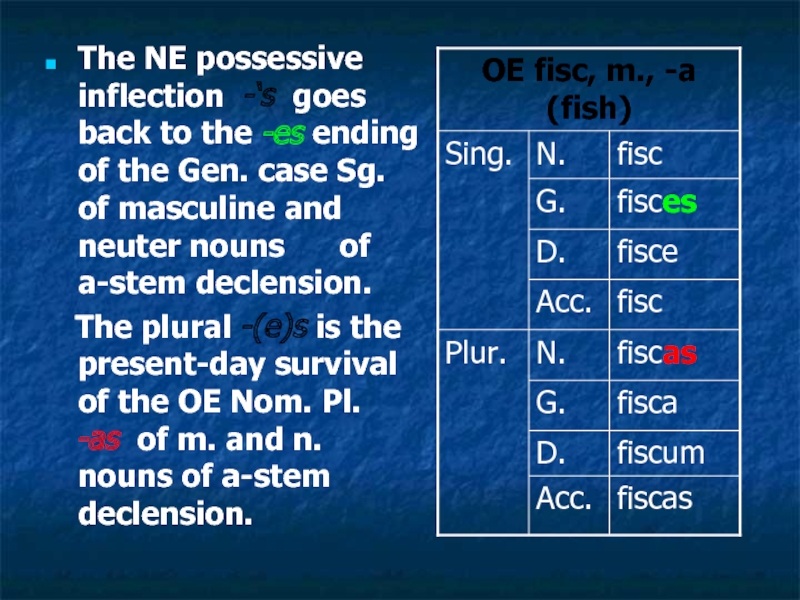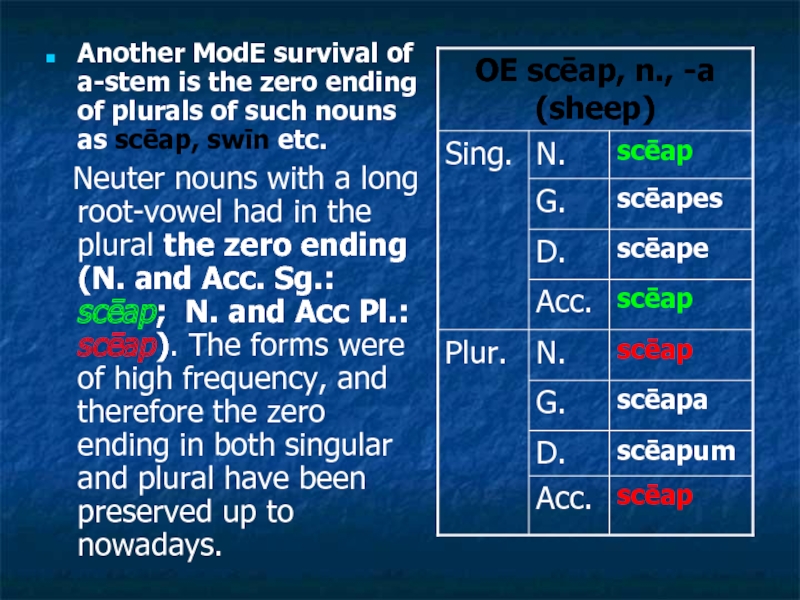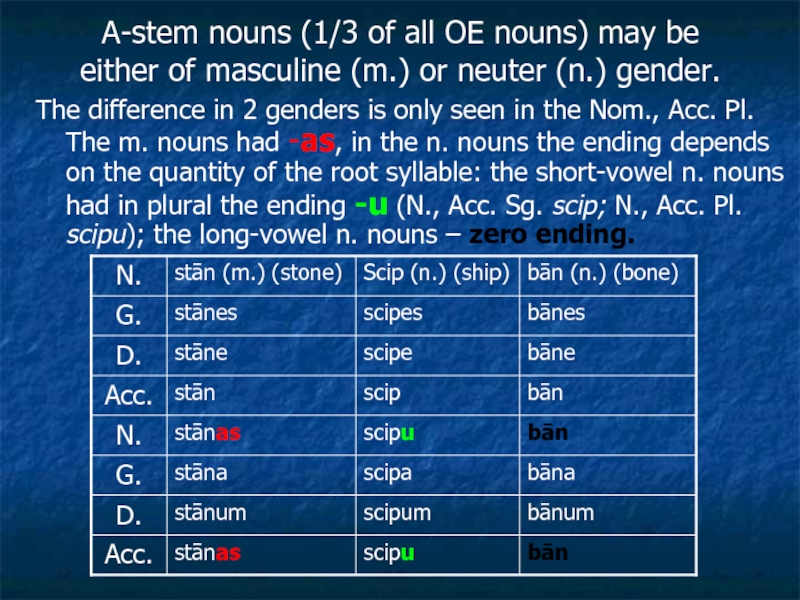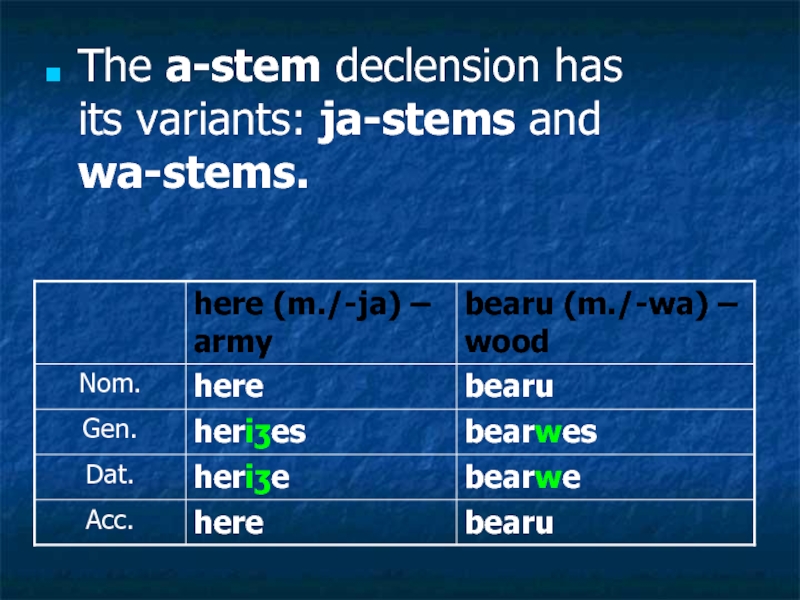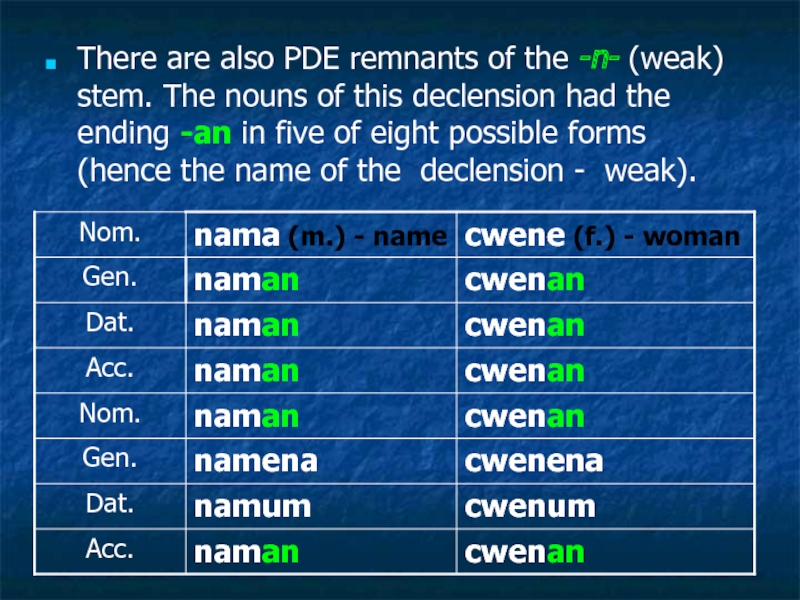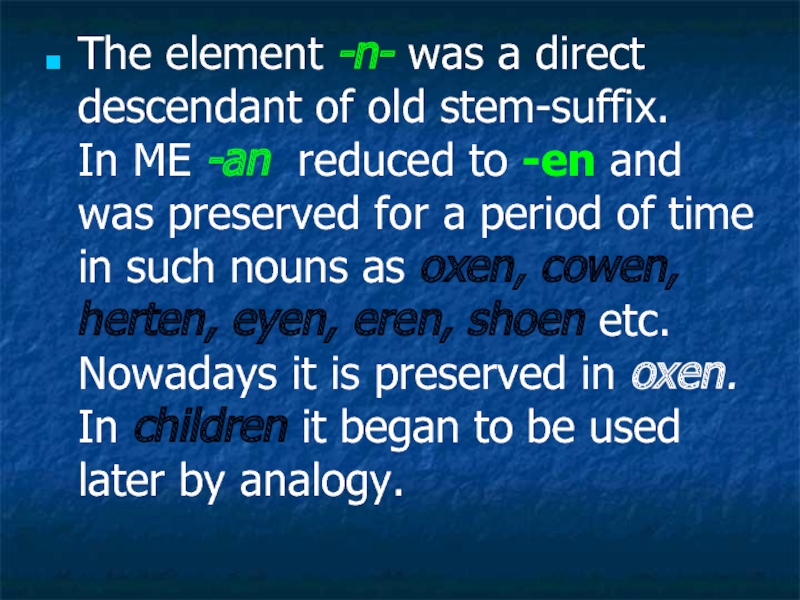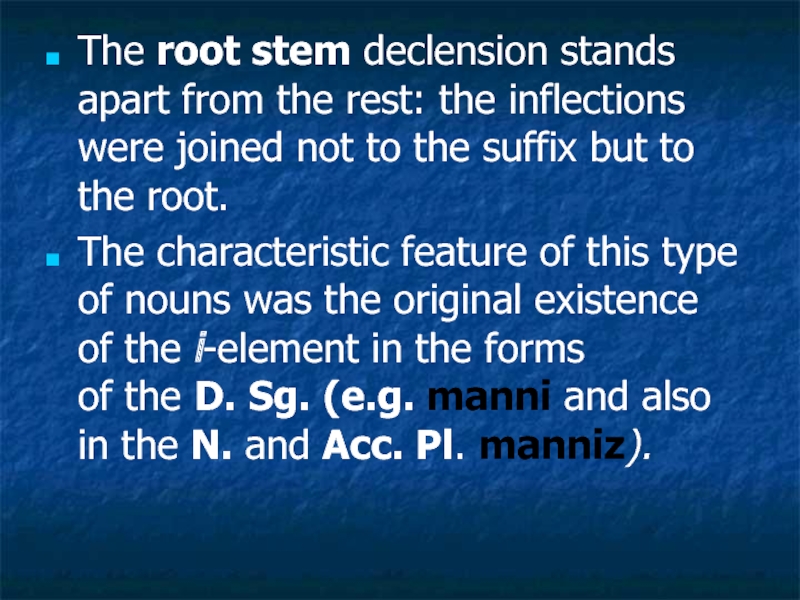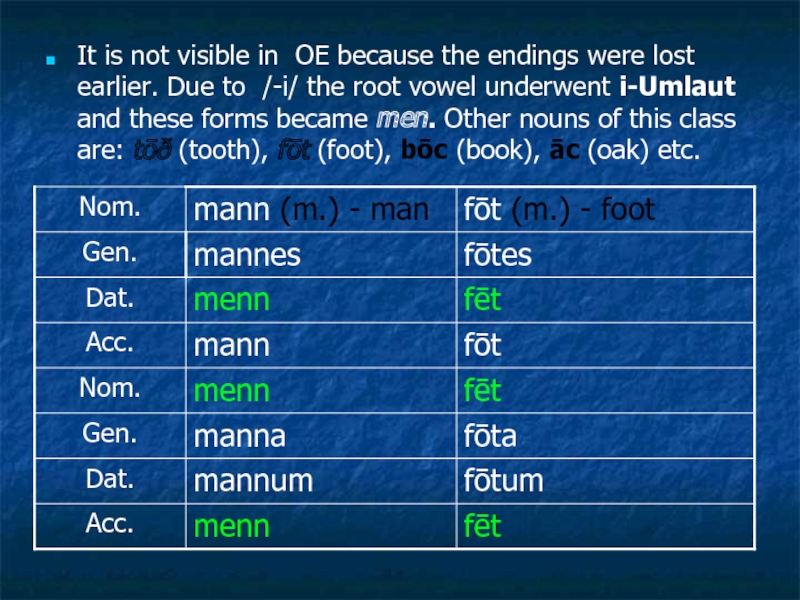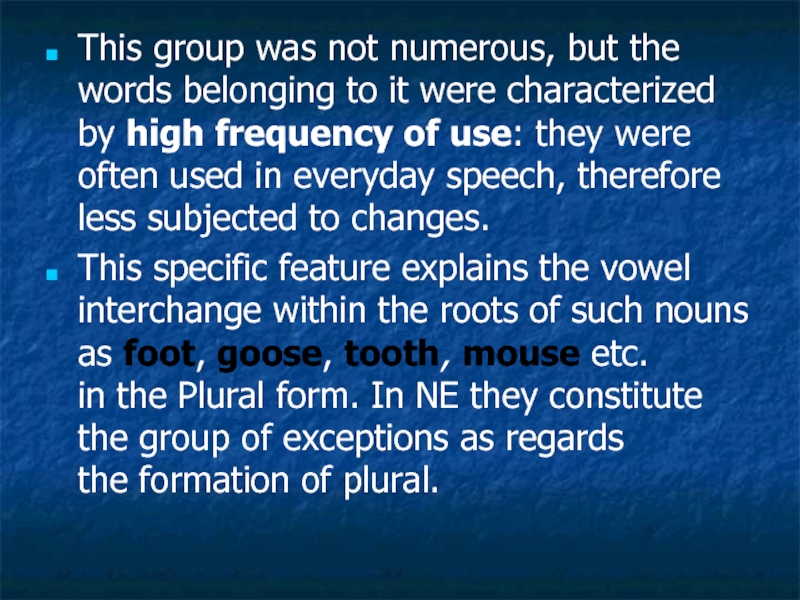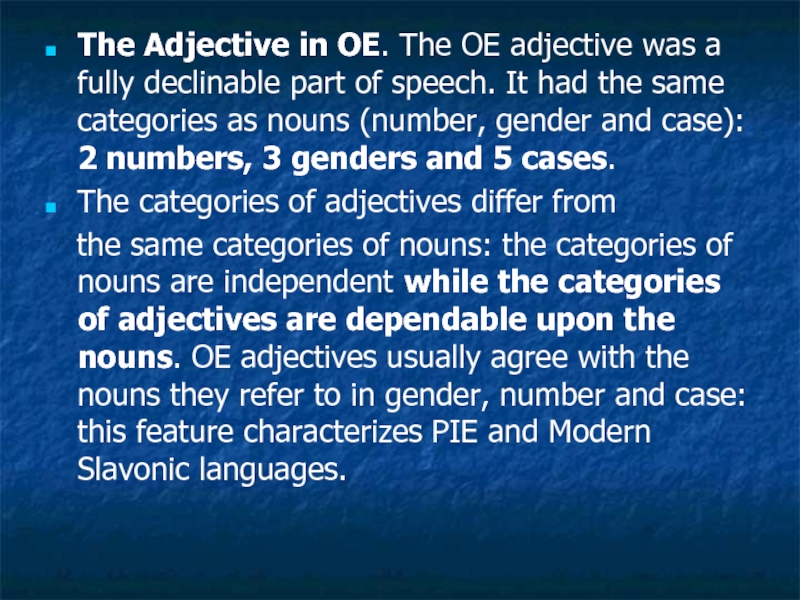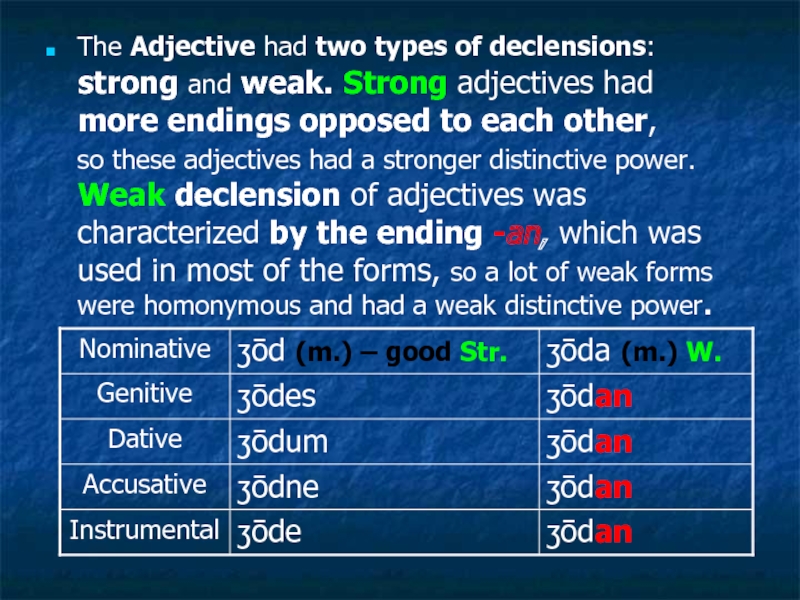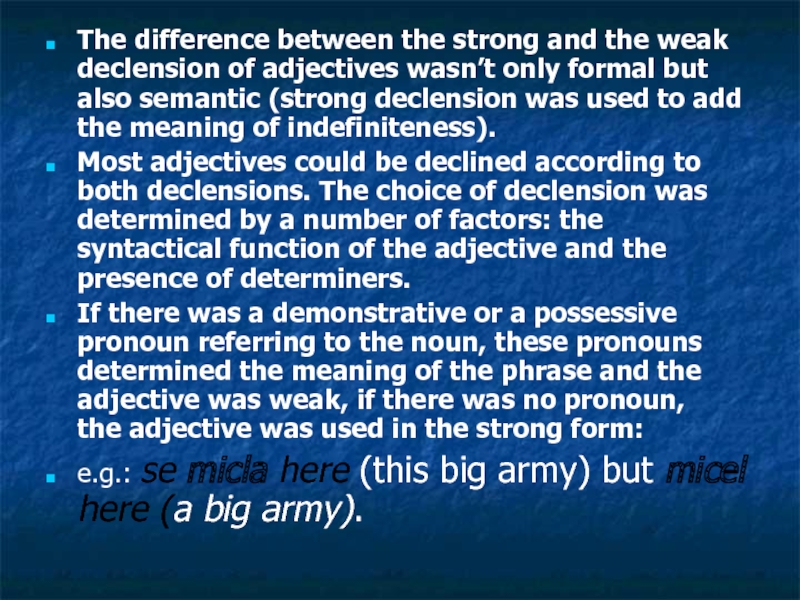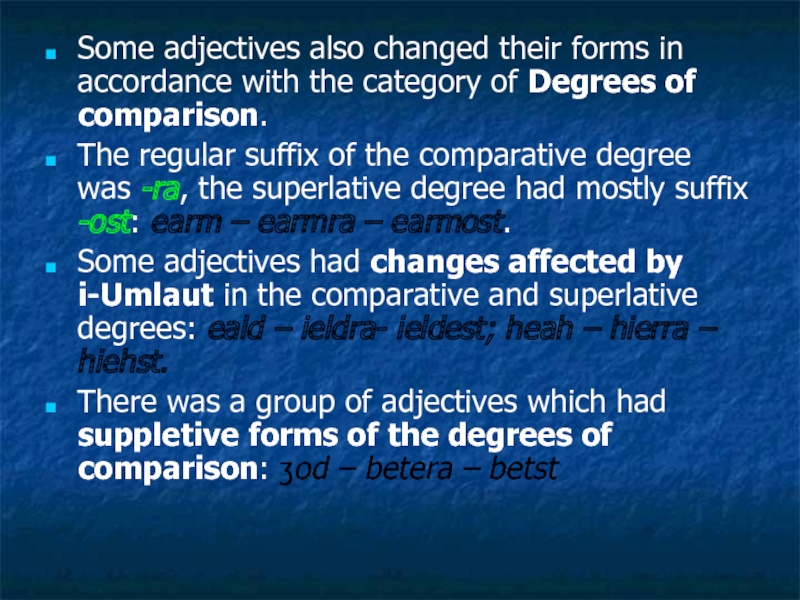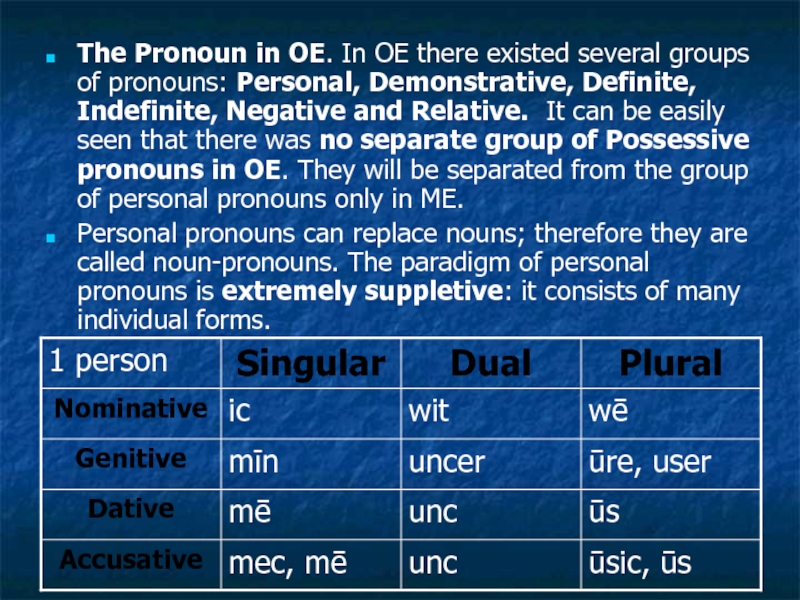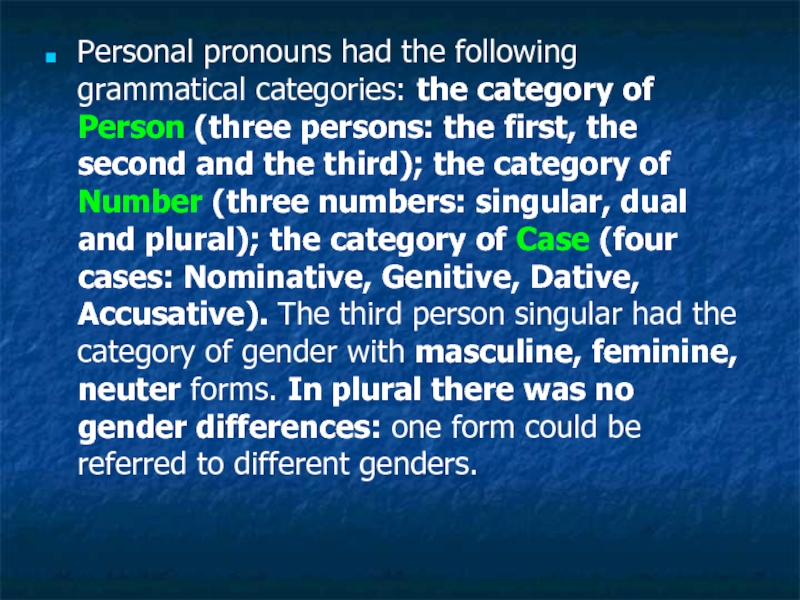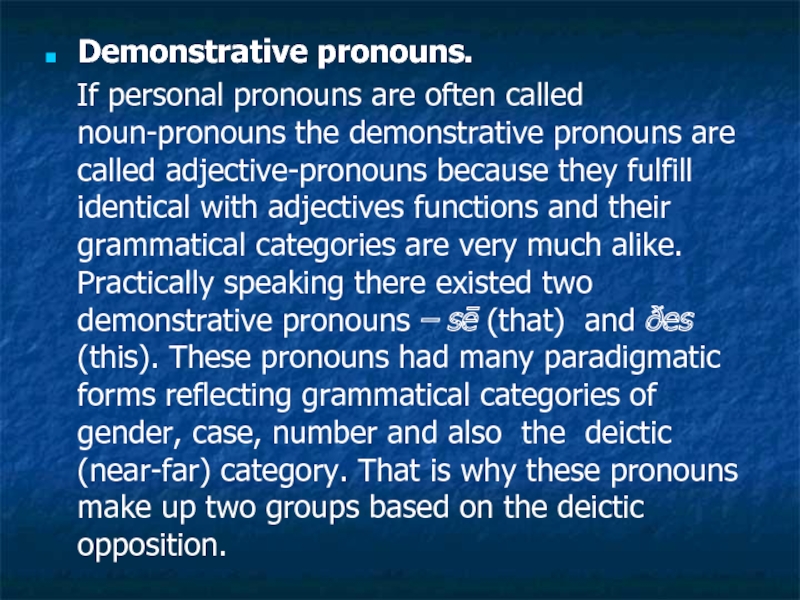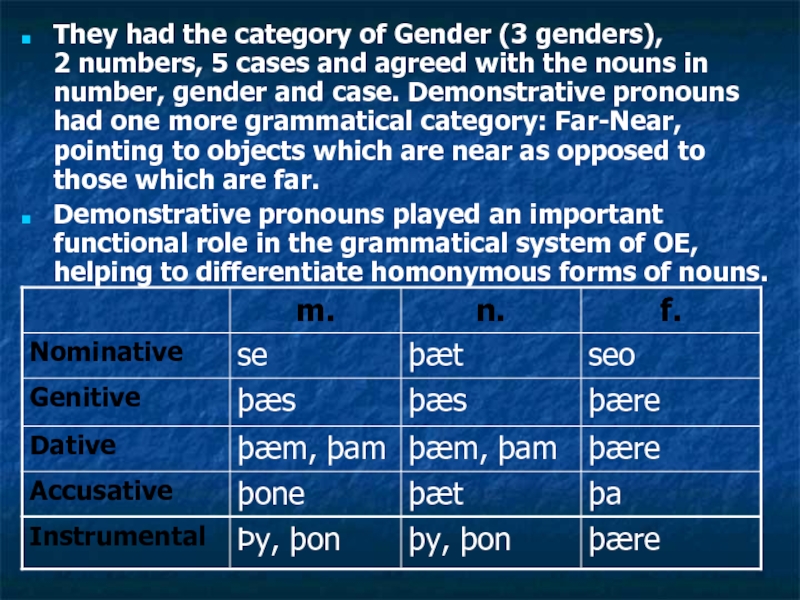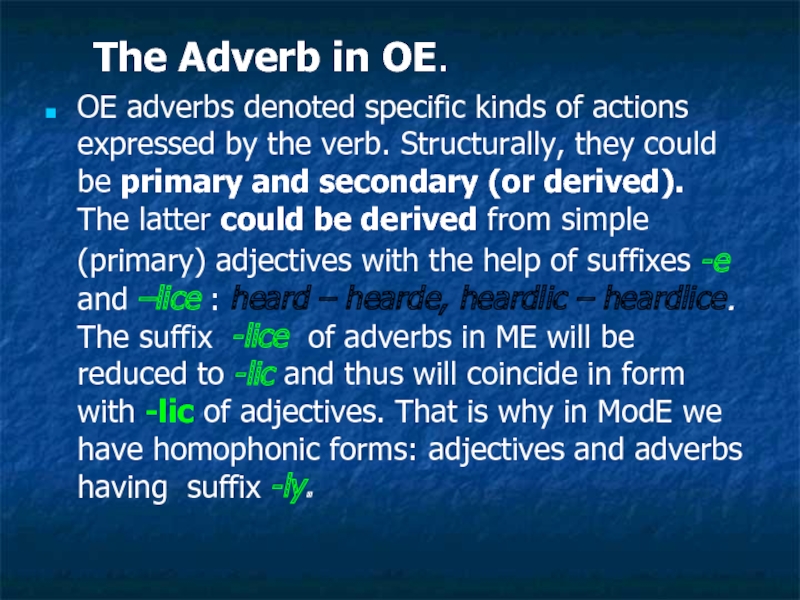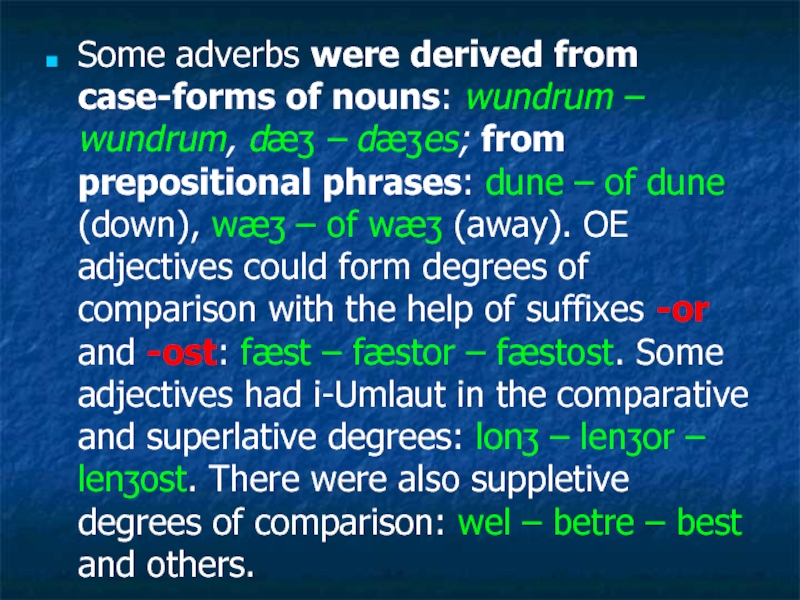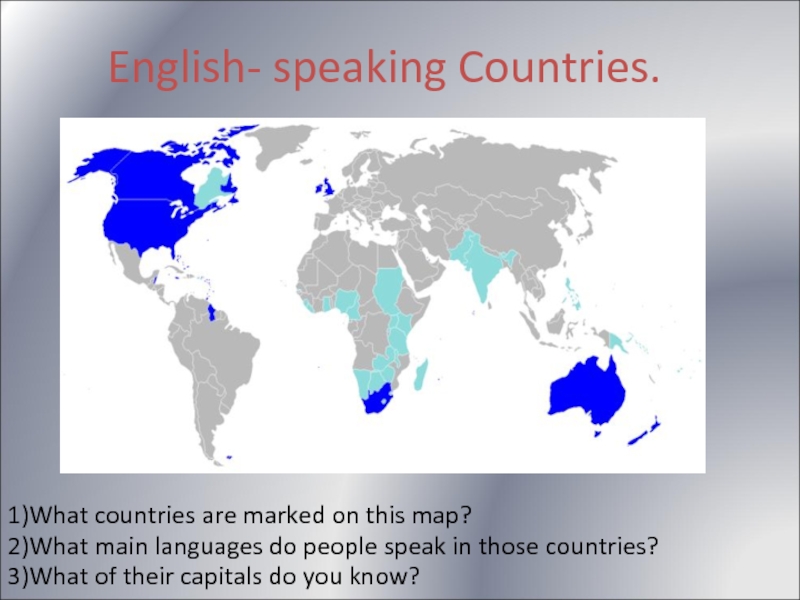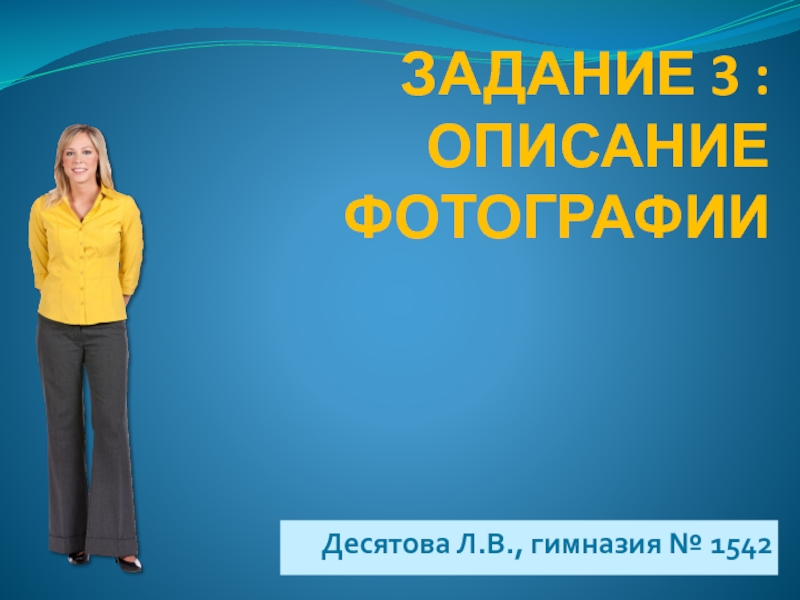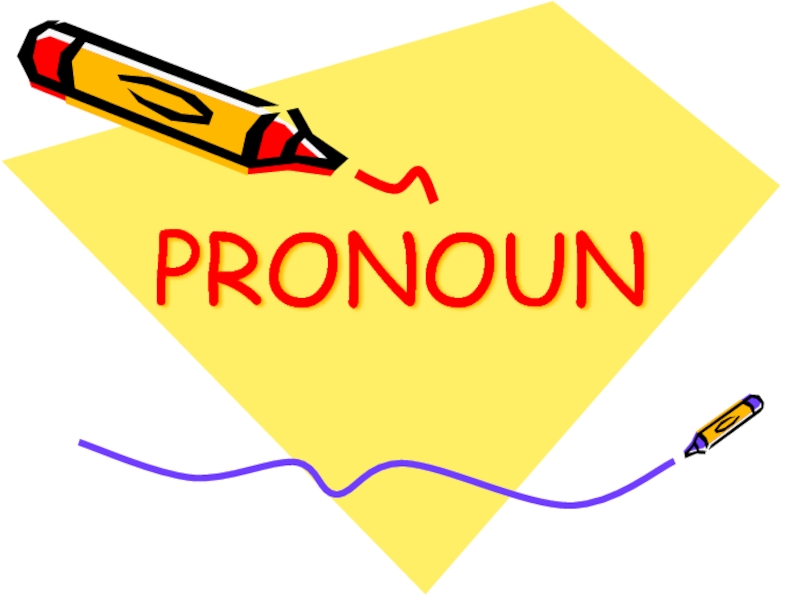- Главная
- Разное
- Дизайн
- Бизнес и предпринимательство
- Аналитика
- Образование
- Развлечения
- Красота и здоровье
- Финансы
- Государство
- Путешествия
- Спорт
- Недвижимость
- Армия
- Графика
- Культурология
- Еда и кулинария
- Лингвистика
- Английский язык
- Астрономия
- Алгебра
- Биология
- География
- Детские презентации
- Информатика
- История
- Литература
- Маркетинг
- Математика
- Медицина
- Менеджмент
- Музыка
- МХК
- Немецкий язык
- ОБЖ
- Обществознание
- Окружающий мир
- Педагогика
- Русский язык
- Технология
- Физика
- Философия
- Химия
- Шаблоны, картинки для презентаций
- Экология
- Экономика
- Юриспруденция
Lecture 3 old english grammar. The nominal system презентация
Содержание
- 1. Lecture 3 old english grammar. The nominal system
- 2. Plan General Characteristics of OE Grammar. The
- 3. Literature Расторгуева Т.А. История английского языка. –
- 4. OE was a synthetic language, though
- 5. There were 5 declinable parts of speech
- 6. The paradigms of different parts of
- 7. The Noun in OE. The
- 8. Thus every noun with all
- 9. The OE Noun had two
- 10. It is necessary to mark that
- 11. On the basis of former stem-building suffixes
- 12. It is necessary to speak about peculiar
- 13. The NE possessive infleсtion -‘s goes back
- 14. Another ModE survival of
- 15. A-stem nouns (1/3 of all OE nouns)
- 16. The a-stem declension has
- 17. There are also PDE remnants of the
- 18. The element -n- was a direct descendant
- 19. The root stem declension stands apart from
- 20. It is not visible in OE because
- 21. This group was not numerous, but the
- 22. The Adjective in OE. The OE adjective
- 23. The Adjective had two types of declensions:
- 24. The difference between the strong and the
- 25. Some adjectives also changed their forms in
- 26. The Pronoun in OE. In OE there
- 27. Personal pronouns had the following grammatical categories:
- 28. Demonstrative pronouns. If personal
- 29. They had the category of Gender (3
- 30. The Adverb in OE.
- 31. Some adverbs were derived from case-forms of
- 32. THANK YOU FOR YOUR ATTENTION!
Слайд 1KYIV NATIONAL LINGUISTIC UNIVERSITY
Subota S.V.
LECTURE 3
OLD ENGLISH GRAMMAR.
THE NOMINAL SYSTEM.
Слайд 2Plan
General Characteristics of OE Grammar.
The Noun. Its Grammatical Categories
Noun Declensions.
The Adjective.
Strong and Weak Declensions of Adjectives. Degrees of Comparison.
The Pronoun. Classes of Pronouns.
The Adverb
Слайд 3Literature
Расторгуева Т.А. История английского языка. – М.: Астрель, 2005. – С.
Ильиш Б.А. История английского языка. – Л.: Просвещение, 1972. – С. 63-86.
Иванова И.П., Чахоян Л.П. История английского языка. – М.: Высшая школа, 1976. – С. 98-135.
Студенець Г.І. Історія англійської мови в таблицях. - К.: КДЛУ, 1998. – Tables 40-46
Слайд 4OE was a synthetic language, though
The analytical grammatical forms (built with the help of auxiliary verbs, auxiliary words, changes of stress and on the basis of the word-order) were practically absent.
Слайд 5There were 5 declinable parts of speech in OE: the Noun,
The nominal paradigm in OE was characterized by the following grammatical categories:
Слайд 6 The paradigms of different parts of speech had the same
Слайд 7
The Noun in OE. The OE noun had grammatical categories of
The category of gender was based on the opposition of three genders – masculine, feminine and neuter.
Gender was not a purely grammatical category. It was a lexico-grammatical category, because gender was expressed not so much by the inflections but by the forms of agreement of adjectives, numerals and pronouns which modify the noun.
Слайд 8
Thus every noun with all its forms belonged to one of
The grammatical category of Gender in OE is already in the process of decay: some nouns could be declined in accordance with different genders usually in different texts: e. g. ærist (resurrection) – m, f and n.
Слайд 9
The OE Noun had two numbers: singular and plural.
The category
N (the Nominative case);
G (the Genitive case);
D (the Dative case);
Acc. (the Accusative case).
The once existing instrumental case was no longer existing in OE. Its functions were taken by the Dative case.
Слайд 10It is necessary to mark that
the morphological classification
But in Germanic languages stem-building suffixes practically are not observed, they have already merged with either the ending or the root. The loss was reinforced by the heavy Germanic stress on the root.
Слайд 11On the basis of former stem-building suffixes most scholars distinguish strong
the strong declension includes nouns with stems (-a, -ō, -i, -u) which are often called vocalic;
the weak declension comprises nouns with the stem originally ending in n-stem only. There are some minor declensions (r-stems, s-stem,nd- stems) (consonantal).
There is also the root-stem declension in which the ending is added not to the suffix but to the root immediately.
Слайд 12It is necessary to speak about peculiar features of some declensions
The OE vowel a-stem declension is the most widely spread and proved to be the most stable in the history.
Слайд 13The NE possessive infleсtion -‘s goes back to the -es ending
The plural -(e)s is the present-day survival of the OE Nom. Pl. -as of m. and n. nouns of a-stem declension.
Слайд 14Another ModE survival of a-stem is the
Neuter nouns with a long root-vowel had in the plural the zero ending (N. and Acc. Sg.: scēap; N. and Acc Pl.: scēap). The forms were of high frequency, and therefore the zero ending in both singular and plural have been preserved up to nowadays.
Слайд 15A-stem nouns (1/3 of all OE nouns) may be
The difference in 2 genders is only seen in the Nom., Acc. Pl. The m. nouns had -as, in the n. nouns the ending depends on the quantity of the root syllable: the short-vowel n. nouns had in plural the ending -u (N., Acc. Sg. scip; N., Acc. Pl. scipu); the long-vowel n. nouns – zero ending.
Слайд 17There are also PDE remnants of the -n- (weak) stem. The
Слайд 18The element -n- was a direct descendant of old stem-suffix.
Слайд 19The root stem declension stands apart from the rest: the inflections
The characteristic feature of this type of nouns was the original existence of the i-element in the forms of the D. Sg. (e.g. manni and also in the N. and Acc. Pl. manniz).
Слайд 20It is not visible in OE because the endings were lost
Слайд 21This group was not numerous, but the words belonging to it
This specific feature explains the vowel interchange within the roots of such nouns as foot, goose, tooth, mouse etc. in the Plural form. In NE they constitute the group of exceptions as regards the formation of plural.
Слайд 22The Adjective in OE. The OE adjective was a fully declinable
The categories of adjectives differ from
the same categories of nouns: the categories of nouns are independent while the categories of adjectives are dependable upon the nouns. OE adjectives usually agree with the nouns they refer to in gender, number and case: this feature characterizes PIE and Modern Slavonic languages.
Слайд 23The Adjective had two types of declensions: strong and weak. Strong
Слайд 24The difference between the strong and the weak declension of adjectives
Most adjectives could be declined according to both declensions. The choice of declension was determined by a number of factors: the syntactical function of the adjective and the presence of determiners.
If there was a demonstrative or a possessive pronoun referring to the noun, these pronouns determined the meaning of the phrase and the adjective was weak, if there was no pronoun, the adjective was used in the strong form:
e.g.: se micla here (this big army) but micel here (a big army).
Слайд 25Some adjectives also changed their forms in accordance with the category
The regular suffix of the comparative degree was -ra, the superlative degree had mostly suffix -ost: earm – earmra – earmost.
Some adjectives had changes affected by i-Umlaut in the comparative and superlative degrees: eald – ieldra- ieldest; heah – hierra – hiehst.
There was a group of adjectives which had suppletive forms of the degrees of comparison: ʒod – betera – betst
Слайд 26The Pronoun in OE. In OE there existed several groups of
Personal pronouns can replace nouns; therefore they are called noun-pronouns. The paradigm of personal pronouns is extremely suppletive: it consists of many individual forms.
Слайд 27Personal pronouns had the following grammatical categories: the category of Person
Слайд 28Demonstrative pronouns.
If personal pronouns are often called noun-pronouns
Слайд 29They had the category of Gender (3 genders),
Demonstrative pronouns played an important functional role in the grammatical system of OE, helping to differentiate homonymous forms of nouns.
